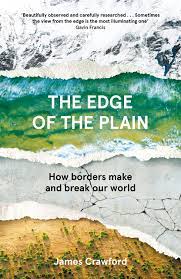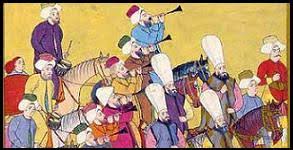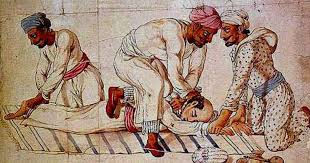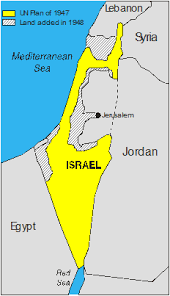Copyright@shravancharitymission
In today’s world, there are innumerable borders than ever before in the history of mankind. To be true in life it’s all about the borders we make and how they make us. Those human demarcations those human barriers on the ground are a source of extreme misery.
China hustles India with infrastructure build-ups, salami slicing and recurrent confrontations on the line of actual control. So it becomes a tense and ghastly activity. Another example is that of Ukraine which is being bombarded at its borders by Russia. These arbitrary lines that cleave the world have enormous power over our lives. The book combines history and reportage to explore this intricate global network of lines and their crossings.
Borders come up in areas where human beings live and move around. This barrier then limits and directs our activities. The landscape may be the same, from one blade of grass to the next, but the lines, fences, and checkpoints make it different. And that makes all the difference to human destinies. The book traces back the idea that Amitav Ghosh called the “enchantment of the lines” while writing about the Indian Partition.
Borders are the volatile flashpoints for political conflagration – but are they also the symptom or the cause of trouble one needs to examine?
Nowhere are these questions about boundaries as knotty as in Israel/Palestine. The book tracks the West Bank border where a wall has come up as a fortified line of separation. The Israeli state draws a line to cleave the territory, leaving people in an illegal limbo, and then follows up with detentions, land seizures and house demolitions.
The border wall has been disputed, segment by segment in the courts, but it keeps morphing and surviving. Israel’s obsession and surfeit of borders have made a mockery of them, bringing home the point that the only real borders are the ones we come to expect, orates the book.
The US was born out of restless borders, declaring its independence from British colonisers by refusing to be contained within its boundaries, as pointed out by the Mason-Dixon Line. The settlers’ “manifest destiny” was to claim all of North America, violently displacing Native Americans and warring with Mexico. Pushing the frontier remains essential to America’s idea of itself. And yet, it is also taken over by the ‘hypnosis of the map’. The book traces the dangerous border between the US and Mexico, where thousands of migrants have died to date trying to cross it.
The book also takes you to sites such as Melilla in Spain and Lampedusa an island near Italy, from where desperate migrants and refugees try to make it to Europe. Masses of people scale fences and razor wire and brave military police, knowing some of them will be picked up, yet gambling and getting through. The darkness and uncertainty of these places make them a fertile ground for far-right parties and movements. Throughout history, wherever physical barriers are erected, they provide clashes between people trying to cross over. In this book, James Crawford argues that our enduring obsession with borders has brought us to a crisis point: We are now entering the endgame of a process that began thousands of years ago when we first started dividing the earth.
The book explores the notion of borders not just as physical walls, but also as other kinds of fortification and defence. The Great Firewall of China is a national barrier in cyberspace. It filters content unwanted by the authorities and nurtures China’s own internet companies. It also explores the ‘cordon sanitaire’ that arose to defend against pandemics.
Meanwhile, climate change is shifting landscapes and changing borders too. The Alpine watershed between Italy and Austria is literally melting. In the Sahara, the Great Green Wall is an experiment in tree planting, an attempt to stave off the desertification off the coast. It’s a wall that doesn’t divide people but unites them under a common goal.
The book is wide-ranging. Its basic message is about how humans define borders, and then they define us.
Beginning with the earliest known marker which denoted the end of one land and the beginning of the next, the author follows the story of borders into our fragile and uncertain future – towards the virtual frontiers of the internet, and the shifting geography of a world beset by climate change.
In the process, the author travels to many borders old and new. From a melting border high in the glacial landscapes of the Austrian-Italian Alps to the only place on land where Europe and Africa meet; from the artist Banksy’s ‘Walled Off Hotel’ in the conflict-torn West Bank to the Sonoran Desert and the fault lines of the US/Mexico border. Combining history, travel and reportage, The Edge of the Plain explores how borders have grown and evolved to control our landscapes, memories, identities and destinies. As nationalism, climate change, globalisation, technology and mass migration all collide with ever-hardening borders, something has to break. Can we let go of the lines that separate us? Or are we fated to repeat the mistakes of the past, as our angry, warming and segregated planet lurches towards catastrophe?
***
By Kamlesh Tripathi
*
https://kamleshsujata.wordpress.com
*
Share it please
*
Shravan Charity Mission is an NGO that works for poor children suffering from life threatening diseases especially cancer. Our posts are meant for our readers that includes both children and adults and it has a huge variety in terms of content. We also accept donations for our mission. Should you wish to donate for the cause. The bank details are given below:
NAME OF ACCOUNT: SHRAVAN CHARITY MISSION
Account no: 680510110004635 (BANK OF INDIA)
IFSC code: BKID0006805
*
Our Publications
GLOOM BEHIND THE SMILE
(The book is about a young cancer patient. Now archived in 8 prestigious libraries of the US that includes Harvard College Library; Harvard University Library; Library of Congress; University of Washington, Seattle; University of Minnesota, Minneapolis; Yale University, New Haven; University of Chicago; University of North Carolina, at Chapel Hill University Libraries. It can also be accessed in MIT through Worldcat.org. Besides, it is also available for reading in libraries and archives of Canada, Cancer Aid and Research Foundation Mumbai; Jaipuria Institute of Management, Noida; India. Shoolini University, Yogananda Knowledge Center, Himachal Pradesh and Azim Premzi University, Bangalore).
ONE TO TANGO … RIA’S ODYSSEY
(Is a book on ‘singlehood’ about a Delhi girl now archived in Connemara Library, Chennai and Delhi Public Library, GOI, Ministry of Culture, Delhi; Available for reading in Indian National Bibliography, March 2016, in the literature section, in Central Reference Library, Ministry of Culture, India, Belvedere, Kolkata-700022)
AADAB LUCKNOW … FOND MEMORIES
(Is a fiction written around the great city of Nawabs—Lucknow. It describes Lucknow in great detail and also talks about its Hindu-Muslim amity. That happens to be the undying characteristics of Lucknow. The book was launched in Lucknow International Literary Festival of 2014. It is included for reading in Askews and Holts Library Services, Lancashire, U.K; Herrick District Library, Holland and Charlotte-Mecklenburg Library, Mecklenburg County in North Carolina, USA; Black Gold Cooperative Library Administration, Arroyo Grande, California).
REFRACTIONS … FROM THE PRISM OF GOD
(Co-published by Cankids–Kidscan, a pan India NGO and Shravan Charity Mission, that works for Child cancer in India. The book is endorsed by Ms Preetha Reddy, MD Apollo Hospitals Group. It was launched in Lucknow International Literary Festival 2016)
TYPICAL TALE OF AN INDIAN SALESMAN
(Is a story of an Indian salesman who is, humbly qualified. Yet he fights his way through unceasing uncertainties to reach the top. A good read not only for salesmen. The book was launched on 10th February 2018 in Gorakhpur Lit-Fest. Now available on Amazon, Flipkart and Onlinegatha)
RHYTHM … in poems
(Published in January 2019. The book contains 50 poems. The poems describe our day-to-day life. The book is available on Amazon, Flipkart and Onlinegatha)
MIRAGE
(Published in February 2020. The book is a collection of eight short stories available in Amazon, Flipkart and Notion Press)
AWADH ASSAM AND DALAI LAMA … The Kalachakra
(The story of the man who received His Holiness The Dalai Lama and his retinue in 1959 as a GOI representative when he fled Tibet in 1959. The book was launched on 21st November 2022 by His Holiness The Dalai Lama at Dharmshala. The titled is archived in the library of the Department of Information and International Relations (DIIR) Government of Tibet, Tibet Policy Institute (TPI) and the personal library of His Holiness. The title is also archived in The Ohio Digital Library, USA).
BHAVANS JOURNAL
Short stories, Book reviews and Articles published in Bhavan’s Journal: 1. Reality and Perception, 15.10.19; 2. Sending the Wrong Message, 31.5.20; 3. Eagle versus Scholars June, 15 & 20 2020; 4. Indica, 15.8.20; 5. The Story of King Chitraketu, August 31 2020; 6. Breaking Through the Chakravyuh, September 30 2020. 7. The Questioning Spouse, October 31, 2020; 8. Happy Days, November 15, 2020; 9. The Karma Cycle of Paddy and Wheat, December 15, 2020; 10. Power Vs Influence, January 31, 2021; 11. Three Refugees, March 15, 2021; 12. Rise and Fall of Ajatashatru, March 31, 2021; 13. Reformed Ruler, May 15, 2021; 14. A Lasting Name, May 31, 2021; 15. Are Animals Better Teachers?, June 16, 2021; 16. Book Review: The Gram Swaraj, 1.7.21; 17. Right Age for Achievements, 15.7.21; 18. Big Things Have Small Beginnings, 15.8.21; 19. Where is Gangaridai?, 15.9.21; 20. Confront the Donkey Within You 30.9.21; 21. Know Your Strengths 15.10.21; 22. Poverty 15.11.21; 23. Top View 30.11.21; 24. The Bansuriwala 15.1.22; 25. Sale of Alaska 15.2.22; 26. The Dimasa Kingdom 28.2.22; 27. Buried Treasure 15.4.22; 28. The Kingdom of Pragjyotisha 30.4.22; 29. Who is more useful? 15.5.22; 30. The White Swan from Lake Mansarovar 30.6.22; 31. Bhool Bhulayya 15.9.22; 32. Good Karma 30.9.22; 33. Good name vs Bad Name 15.10.22; 34. Uttarapath—The Grand Trunk Road 1.12.22; 35. When Gods Get Angry 1.1.23; 36. Holinshed’s Chronicles 15.1.23; 37. Theogony 15.2.23
SUNDAY SHILLONG TIMES
ARTICLES & POEMS: 1. POEM: HAPPY NEW YEAR 8.1.23; 2. POEM: SPRING 12.3.23; 3. POEM: RIGHT AND WRONG 20.3.23, 4. THE GUSH OF EMOTION—WRITING, 26.3.23;
BANDRA TIMES, MUMBAI
ARTICLES & POEMS: 1. POEM SPRING, 1.4.23;
(ALL THE ABOVE BOOK TITLES ARE AVAILABLE FOR SALE ON AMAZON, FLIPKART AND OTHER ONLINE STORES OR YOU COULD EVEN WRITE TO US FOR A COPY)
*****














